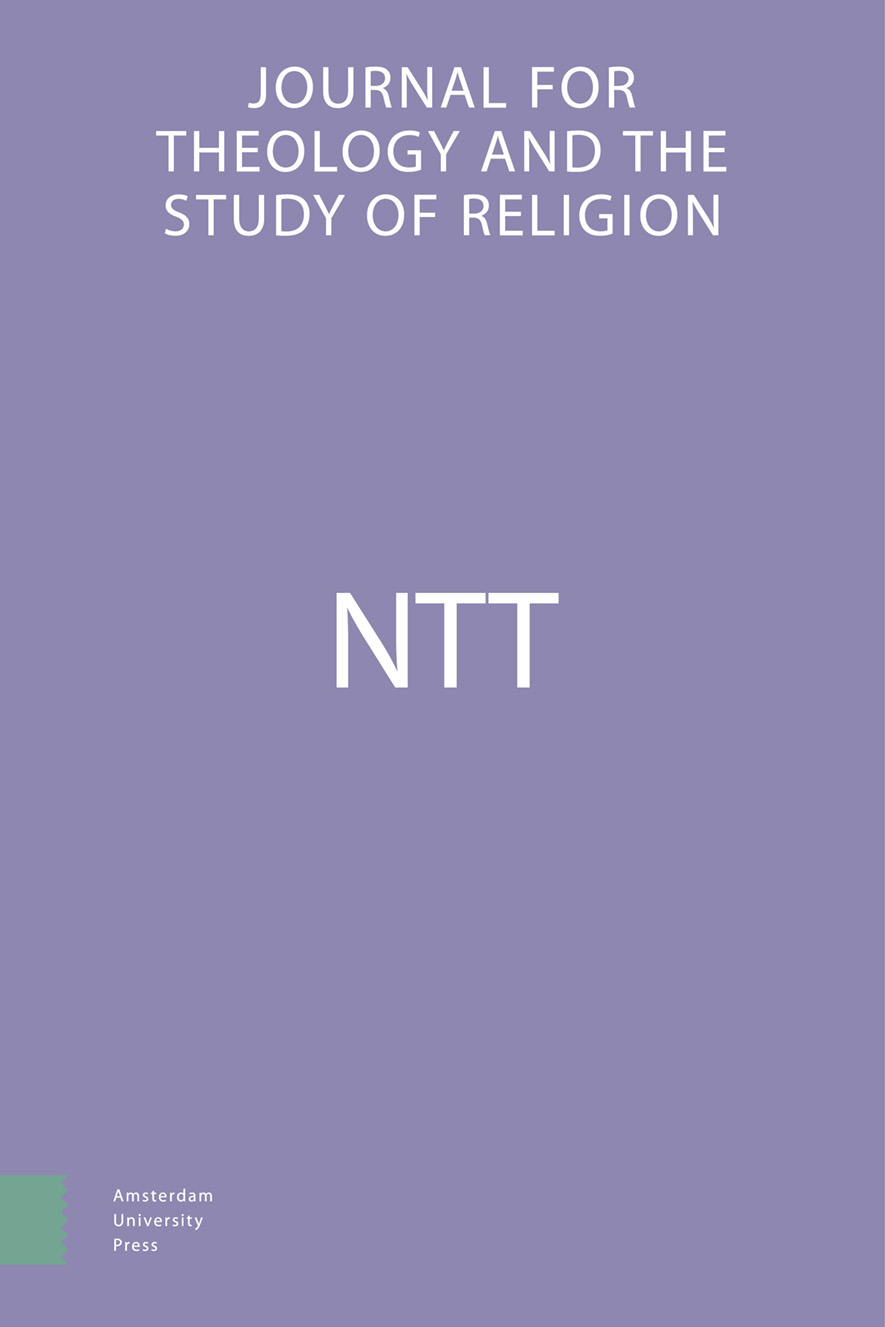- Home
- A-Z Publications
- NTT Journal for Theology and the Study of Religion
- Previous Issues
- Volume 77, Issue 2, 2023
NTT Journal for Theology and the Study of Religion - Volume 77, Issue 2, 2023
Volume 77, Issue 2, 2023
- Artikelen
-
-
-
‘Dan raak Ik diep bewogen …’ Onze beelden van God en het Godsbeeld van Jeremia
More LessAuthor: Eric PeelsAbstractThe loss of relevance of the Old Testament in church and society is in no small part related to the difficulty one has with the Old Testament image of God. In this article, I give a brief outline of the image of God in the book of Jeremiah, which is considered one of the darkest books of the Old Testament. The tension between the two main lines of Jeremiah’s image of God, sovereignty and compassion, gives this image a great dynamic. This is not about contrasting images of God, but about a paradoxical high tension that is peculiar to the preaching of the book of Jeremiah, against the background of the deepest crisis in the existence of Judah and Jerusalem. However, the preaching of this book became of great significance for a severely traumatized community, to draw hope from it to rebuild an existence. Jeremiah’s image of God addresses the reality of concrete life, while vague or humanizing images of God tend to move away from it.
-
-
- Research Note
-
-
-
Why Were So Few Christians Crucified?
More LessAuthor: Ruben van WingerdenAbstractDespite the presumed prominence of crucifixions of Christians in early Christianity, we have a surprising lack of sources on crucified Christians. While recent research collected a mere six sources—but not all are agreed upon—one would expect many more instances: after all, to be crucified like Jesus Christ would be the summum of the Imitatio Christi. Curiously, the reason why we have so few sources on crucified Christians has not previously been addressed. In this short Research Note, I suggest two possible answers that need to be explored further: (1) perhaps crucifixion was not as common as modern scholars tend to assume, and (2) because crucifixion was reserved for enslaved people, rebels and peregrini, the great spread of Roman citizenship in the third century likely reduced the chance of crucifixion.
-
-
- Key Text
-
-
-
Religion is Not an Epiphenomenon
More LessAuthor: Eric VenbruxAbstractIn NTT JTSR’s series on Key Texts, W.E.H. Stanner’s On Aboriginal Religion (1959-1963) cannot be missed. It is a crucial text in the study of religion that merits renewed attention. The text concerns the Murinbata (now: Murrinh-patha) of north Australia. The Murinbata consider life, according to Stanner, “A joyful thing with maggots at the centre.” Stanner’s text on Aboriginal religion forms the main part of his exploration of Aboriginal High Culture. He offers a fundamental critique of Durkheim’s The Elementary Forms of the Religious Life and argues that Aboriginal religion has to be studied in its own right. Stanner uses the word “everywhen” to capture the Aboriginal worldview, the Dreamtime.
-
-
- Review Essay
-
- Reviews
-
-
Georg Pfleiderer and Harald Matern (eds.), Die Religion der Bürger: Der Religionsbegriff in der protestantischen Theologie vom Vormärz bis zum Ersten Weltkrieg (Tübingen: Mohr Siebeck, 2021), ISBN 9783161597503; xiv + 1032 pp., € 129.00, and e-book in open access.
More LessAuthor: Arie L. Molendijk
-
Volumes & issues
-
Volume 79 (2025)
-
Volume 78 (2024)
-
Volume 77 (2023)
-
Volume 76 (2022)
-
Volume 75 (2021)
-
Volume 74 (2020)
-
Volume 73 (2019)
-
Volume 72 (2018)
-
Volume 71 (2017)
-
Volume 70 (2016)
-
Volume 69 (2015)
-
Volume 68 (2014)
-
Volume 67 (2013)
-
Volume 66 (2012)
-
Volume 65 (2011)
-
Volume 64 (2010)
-
Volume 63 (2009)
-
Volume 62 (2008)
-
Volume 61 (2007)
-
Volume 60 (2006)
-
Volume 59 (2005)
-
Volume 58 (2004)
-
Volume 57 (2003)
-
Volume 56 (2002)
-
Volume 55 (2001)
-
Volume 54 (2000)
-
Volume 53 (1999)
-
Volume 52 (1998)
-
Volume 51 (1997)
-
Volume 50 (1996)
-
Volume 49 (1995)
-
Volume 48 (1994)
-
Volume 47 (1993)
-
Volume 46 (1992)
-
Volume 45 (1991)
-
Volume 44 (1990)
-
Volume 43 (1989)
-
Volume 42 (1988)
-
Volume 41 (1987)
-
Volume 40 (1986)
-
Volume 39 (1985)
-
Volume 38 (1984)
-
Volume 37 (1983)
-
Volume 36 (1982)
-
Volume 35 (1981)
-
Volume 34 (1980)
Most Read This Month

Most Cited Most Cited RSS feed
-
-
How to read Philo
Author: D. T. Runia
-
- More Less

